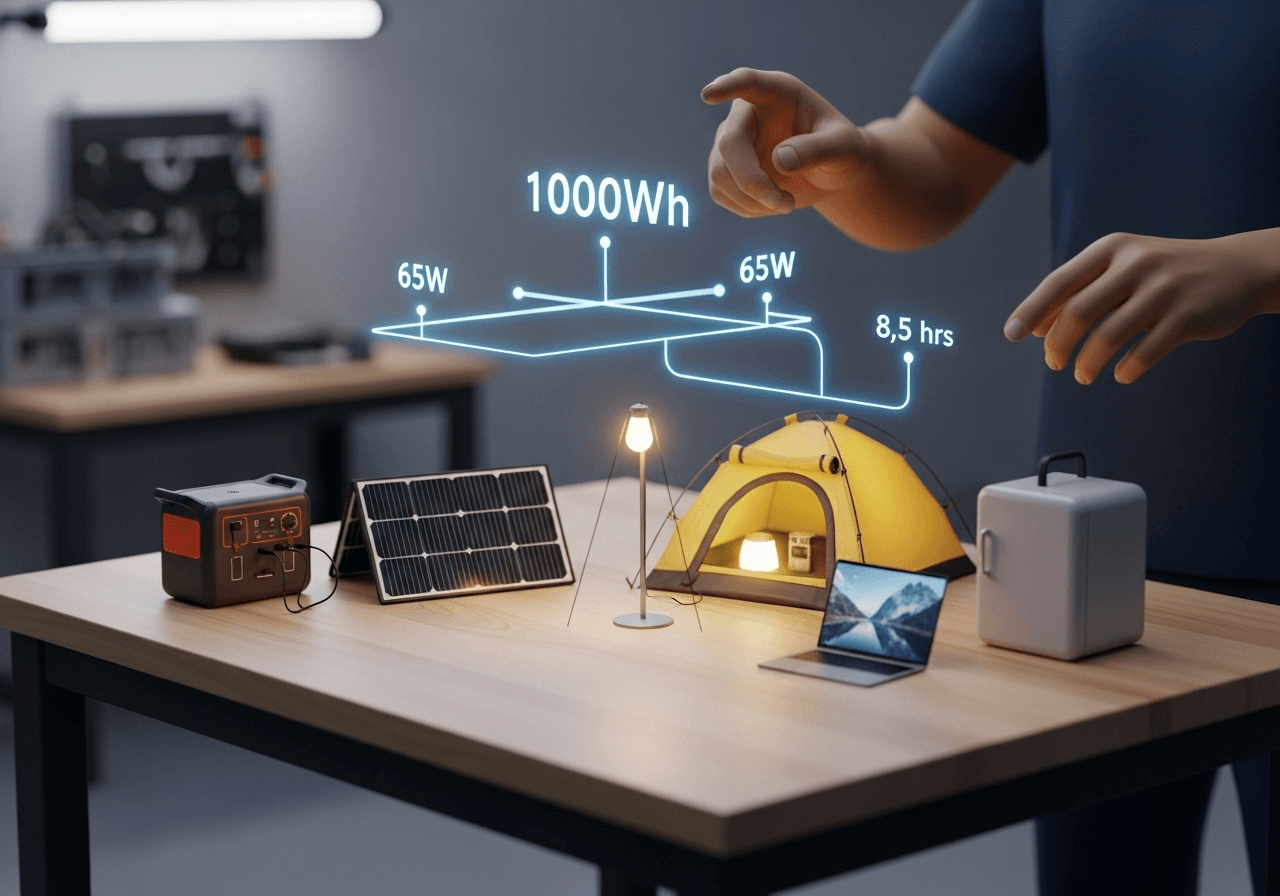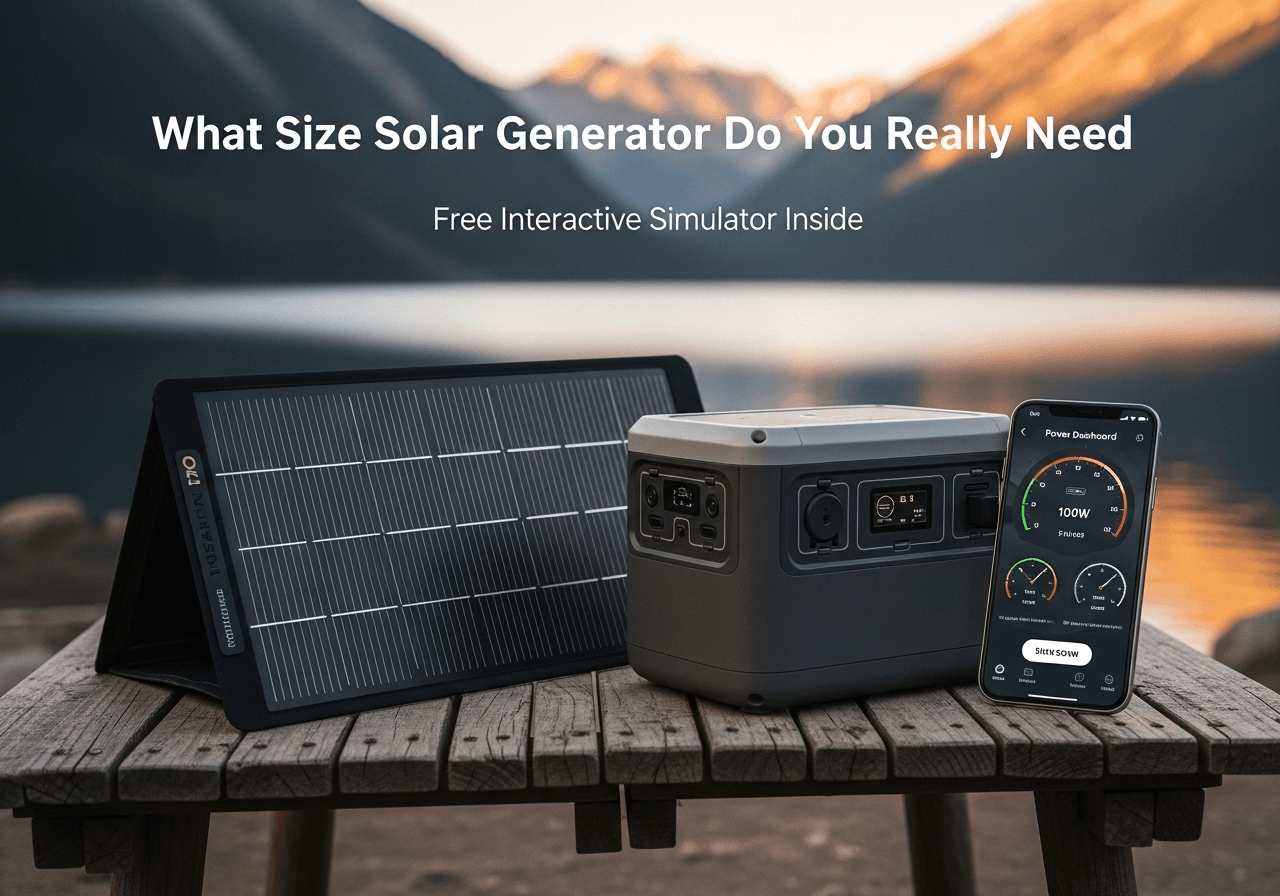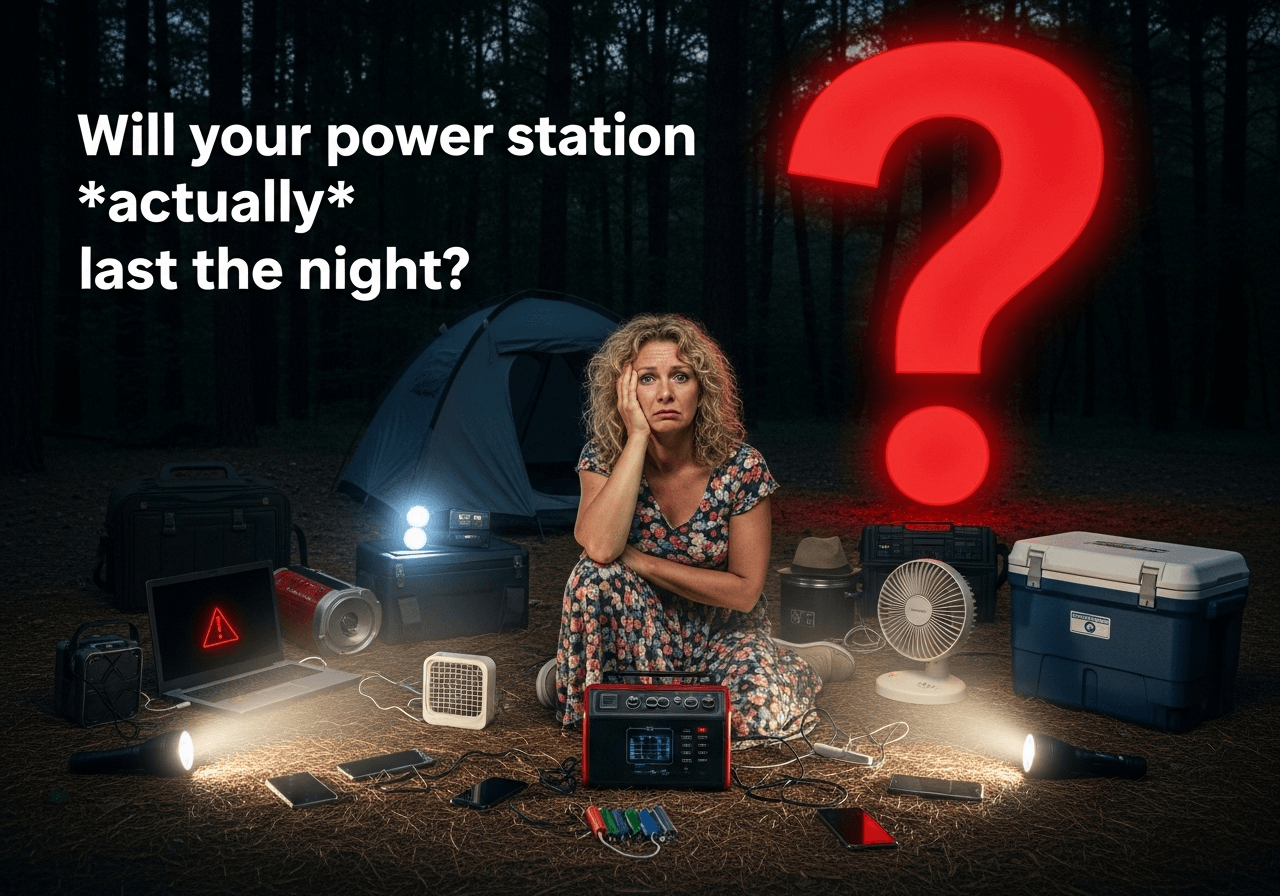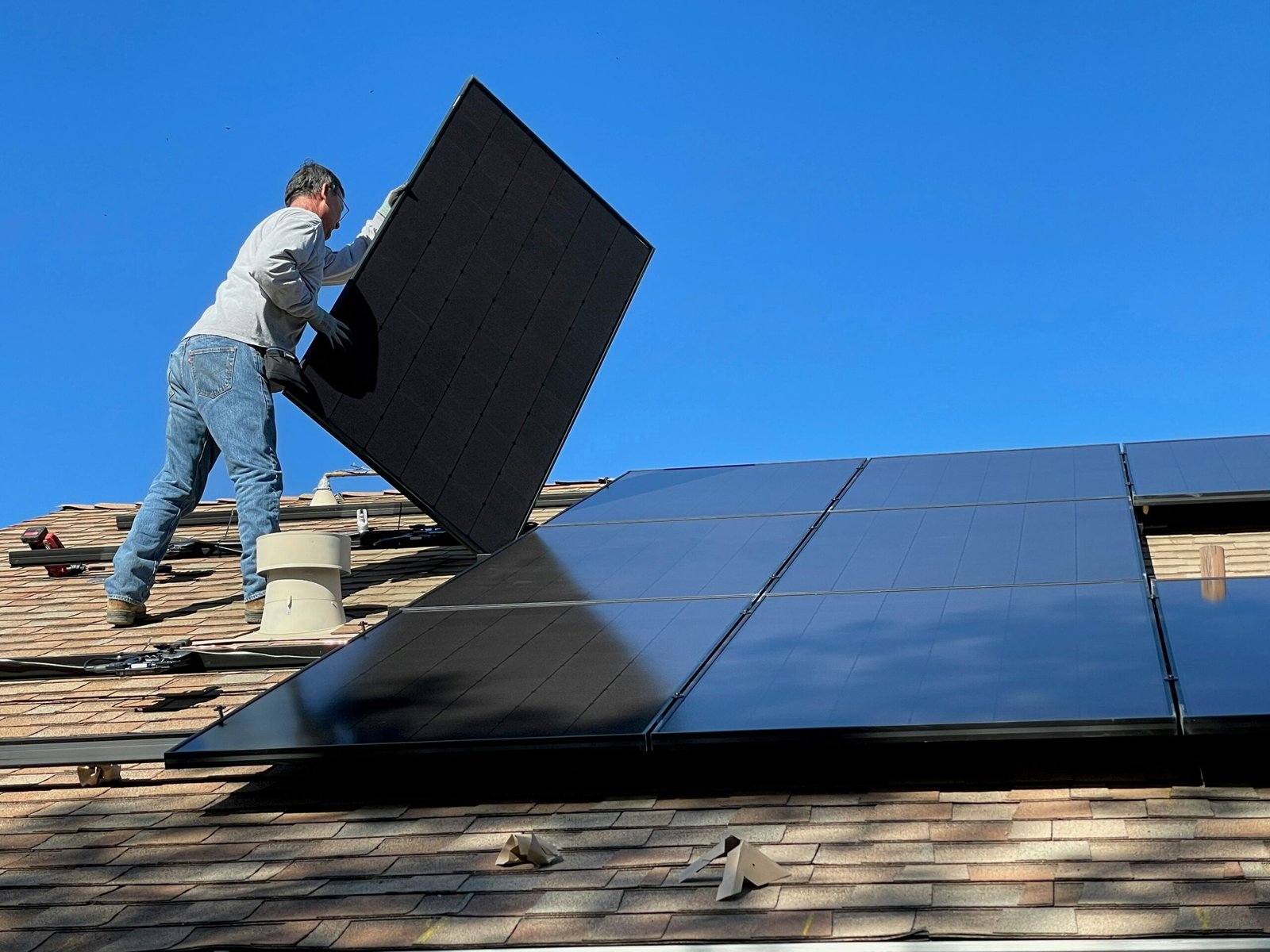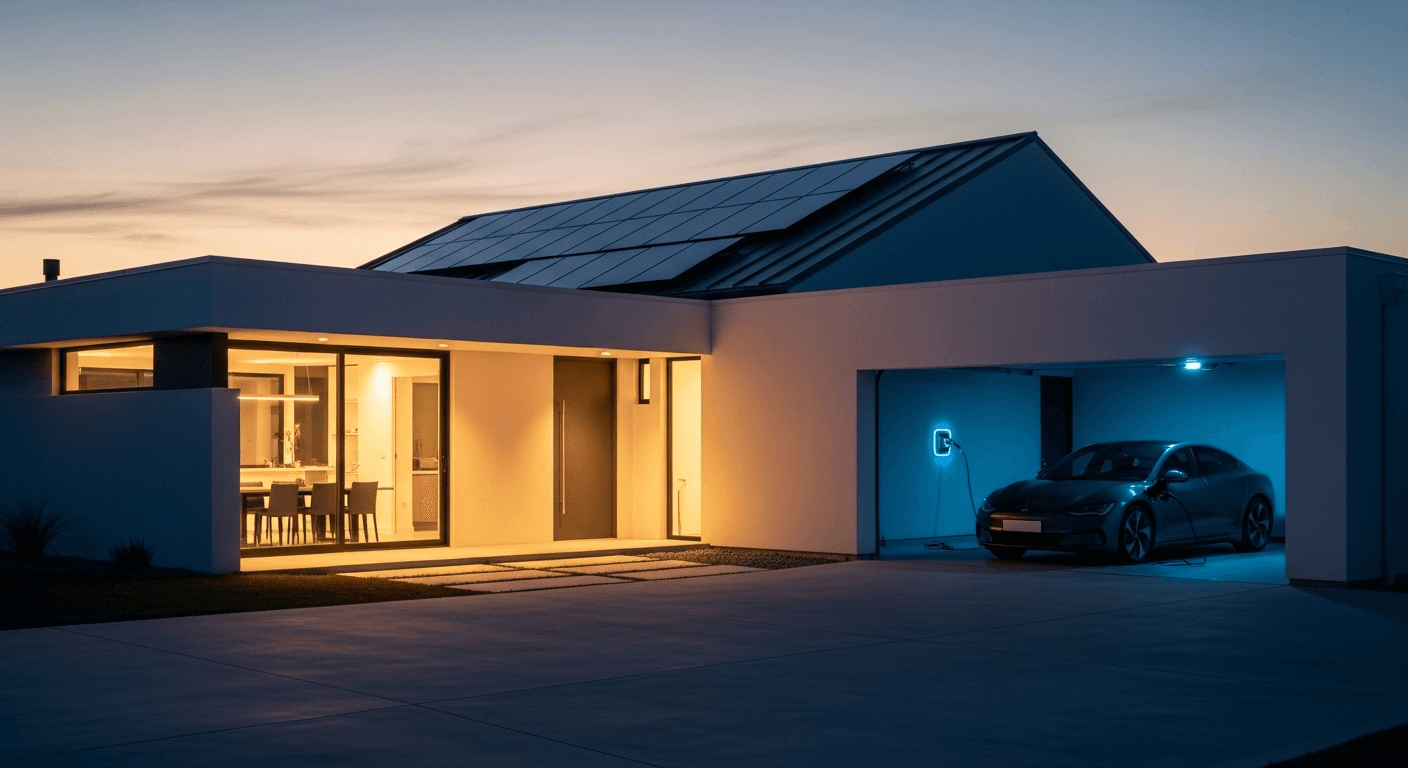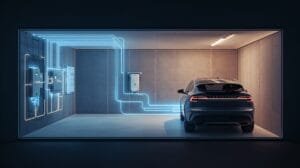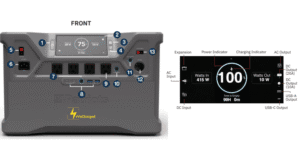Portable Power Playground
Confused about what size power station or solar panel you need? You’re in the right place. Select your gear, flip the switches on the appliances you want to run, and see your system’s performance update in real-time!
1. Choose Your Gear
Power Station (The “Tank”)
300 Wh
Weekend Warrior
500 Wh
Extended Trip
1000 Wh
Workhorse
2000 Wh
Home Backup
Solar Panel (The “Refill”)
100 W
Compact
200 W
Standard
400 W
High Output
2. Build Your Setup
Live Dashboard
Total Power Draw
0 Watts
System Status
—
Estimated Battery Runtime
–.- Hours
Time to Recharge with Solar
–.- Hours
The Verdict
Select your gear and appliances to see a live analysis.
The Portable Power Playground: An Interactive Tool to Build Your Perfect Setup
You’ve seen them everywhere. That wall of orange, black, and grey boxes promising “power anywhere.” They’re called power stations or solar generators, and when you start looking at the specs, your eyes glaze over.
Watt-hours, max output, LiFePO4, MPPT… it’s an alphabet soup of jargon that doesn’t answer the one question you actually have: “What can I run, and for how long?”
We decided to build something to fix this.
Welcome to the Portable Power Playground. This isn’t just a guide; it’s a live simulator. It’s a way for you to “try before you buy,” building your dream off-grid setup and seeing its performance in real-time, without spending a single dollar.
How it works is simple:
- Choose Your Gear: Select a power station and solar panel.
- Build Your Setup: Flip the switches on the appliances you want to run.
- See Live Results: Watch the dashboard on the right update instantly.
Ready to stop guessing? Let’s play.
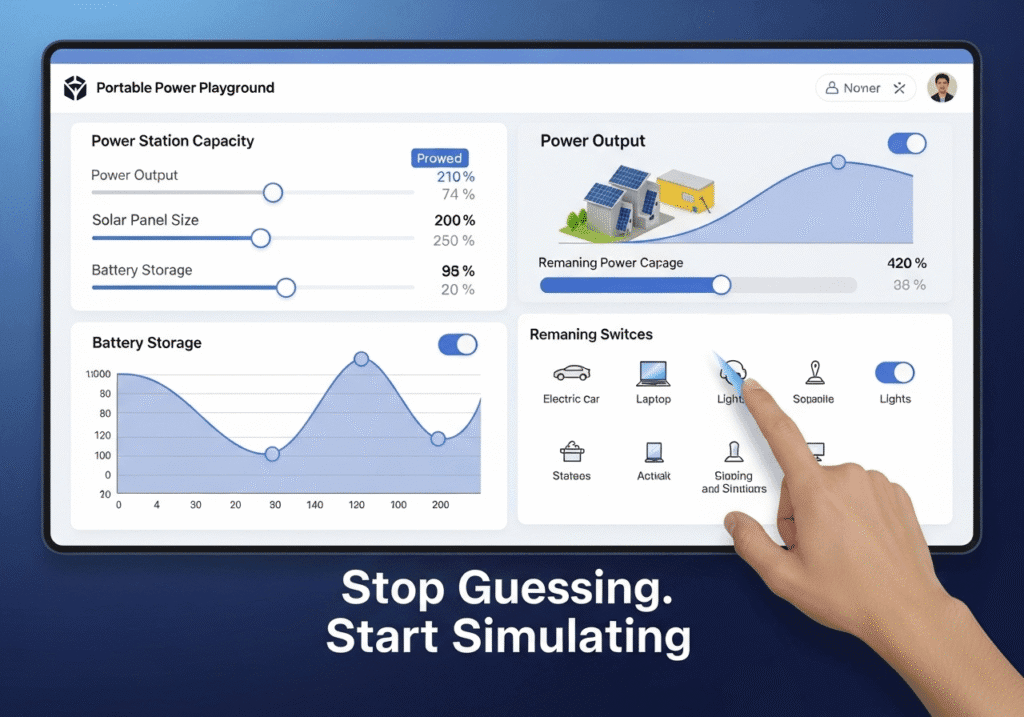
How to “Read” the Dashboard: The Numbers Explained
The dashboard gives you all the answers, but understanding why the numbers change is where you become a true expert. Here’s a simple breakdown of what’s happening behind the scenes.
Total Power Draw (Watts)
This is the simplest number. It’s the total amount of power all of your “on” appliances are demanding from the power station right now. If you turn on a 60W fridge and a 40W fan, your total draw is 100W.
System Status
This is your safety check. Every power station has a limit on how much power it can deliver at once (its “Max Output Wattage”).
- ✅ STABLE: Your total draw is below the limit. All good!
- 🚨 OVERLOAD: You’re asking for more power than the station can handle (e.g., trying to run a 1200W coffee maker on a 500W station). In the real world, the station would automatically shut off to protect itself.
Estimated Battery Runtime (Hours)
This is the big one: “How long will it last?” Our calculation is based on a simple, honest formula:
Battery Capacity (Wh) x 0.85 / Total Power Draw (W) = Runtime in Hours
Why the “0.85”? This is our real-world efficiency factor. Converting battery power (DC) to household power (AC) isn’t 100% efficient; some energy is always lost as heat. An 85% efficiency is a realistic number for a quality power station. We use this so you get a real answer, not an optimistic marketing one.
Time to Recharge with Solar (Hours)
This tells you how long it would take your chosen solar panel to recharge your chosen power station from empty to full.
Battery Capacity (Wh) / (Panel Wattage (W) x 0.75) = Recharge Time in Hours
Why the “0.75”? This is our “real-world sun” factor. A 100W panel almost never produces 100 watts due to clouds, heat, and the angle of the sun. 75% is a good, conservative estimate for a bright, sunny day.
The Verdict: What Makes a “Good” System?
The verdict text gives you a quick summary of your setup’s viability.
- A “sustainable setup” means your solar input is greater than your power draw. In this state, you could theoretically run your gear forever as long as the sun is out!
- A “battery drain” scenario means you’re using more power than your panels can produce. This is perfectly fine, but it means your setup is not indefinite. Your solar panels are just extending your runtime, not fully keeping up.
Now, go play with the tool again. Try a bigger battery or a more powerful panel. See how it changes the equation. By the time you’re done, you won’t just know what to buy—you’ll know why.

